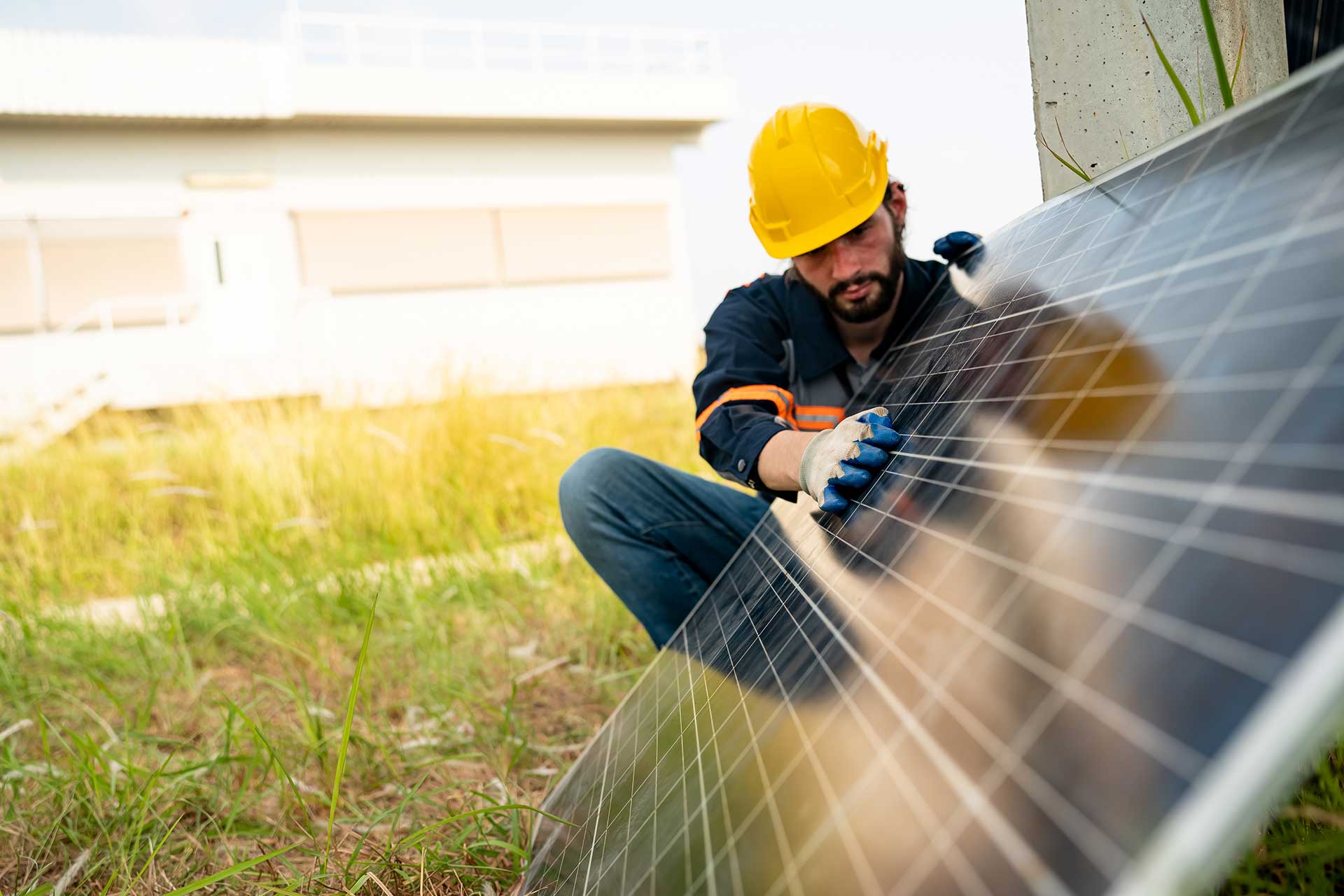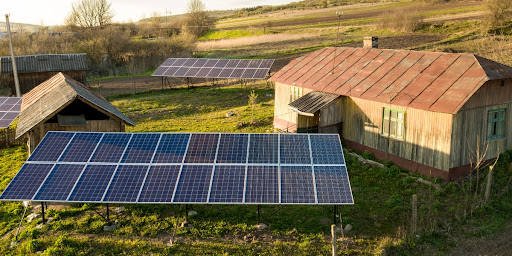At Off Grid Solar Works, our mission is to empower off-grid solar adopters with products and services, enabling simpler and faster projects that reduce cost and result in a more reliable and professional installation. Our primary objective is to provide better alternatives than component-by-component installations when undertaking projects such as solar systems to power cabins, RVs, and off-grid homes.
As with most decisions in life, a very important prerequisite is “awareness.” Posts in this blog from Off Grid Solar Works result from over fifteen years of experience with hundreds of off-grid systems. We intend to help individuals become aware of issues and alternatives to become effective “managers” of their off-grid DIY solar system projects. We encourage every DIY adopter to be a manager first and a laborer second.
In your role as an off-grid DIY solar project manager, you may decide to do some or all of the hands-on work yourself. On the other hand, you may decide not to do everything yourself once you know the issues and the alternatives. Even Superman has weaknesses, and we may like someone to do things for us, even if we could do them ourselves.
We hope this blog and the Off Grid Solar Works products will help you realize your solar-powered vision and that you enjoy the journey!
What is the difference between Off-Grid vs Grid-Tied Solar?
Differences between off-grid and grid-tied solar systems are more than technical. At the most fundamental level, grid-tied systems are typically used to reduce electric bills, while off-grid systems are required to keep the lights on.
As a result, performance problems with off-grid solar systems have a much greater impact on lifestyle. If a grid-tied system is too small or fails, you could have a higher electric bill. If your off-grid system has a problem, you could depend on candles and spoil your food.
Another critical difference is that off-grid systems use batteries. Most commonly, these are lithium batteries, which add significant cost to the system. Additionally, most off-grid solar systems use ground mounts, which are more expensive than roof-mounted solar.
There are many tools that have been developed for grid-tied solar adopters to model and understand their systems before making an investment. Even though the off-grid solar investment is typically larger than a grid-tied investment, similar tools have not been available to the off-grid solar adopter until now.
Off Grid Solar Works provides the online Off Grid “Estimator” software, which is free to use for non-commercial purposes. Now, you can better plan and power your off-grid lifestyle with the right system at the right cost and custom-designed for you.
How does off-grid solar work?
The story ” The Rainstorm and the Fire, ” created by Off Grid Solar Works, is a good analogy that can be helpful even to individuals with a limited solar background.
Picture a beautiful small farm with a pond on a day with dark rain clouds in the sky. Then, a fire breaks out. Pumps are used to pump water out of the pond to put out the fire. Luckily, it starts raining, which helps refill the pond.
But how can that story help us understand off-grid solar? Consider that the pond is your battery bank, the pumps are your inverters, and the fire is your appliance load. You can see that no matter how big your pond (battery bank) may be, you will not be able to put out the fire (appliance load) if your pumps (inverters) are not big enough.
This basic understanding can help you evaluate your off-grid DIY solar system, which may otherwise be confusing if we talk about energy requirements, power requirements, surge, kW, kWh, etc.
Importantly, the appliance load is critical and determines everything about your solar system. How big are the bursts of flame (power requirement), how big is the fire, and how long will it burn (energy requirements). This, in turn, determines how large your pumps need to be (inverters), how much water needs to be stored in the pond (kilowatt hours of storage), and how much rain (kWh of solar generation) is needed to keep the pond full (batteries charged). Don’t forget that, unlike grid-tied solar that must balance solar production with appliance load over twelve months, off-grid solar production has a daily requirement. In an off-grid application, each day solar production is either used during the day, stored in batteries, or simply lost.
One fundamental takeaway from the Rainstorm and the Fire story is that one of the most important solar decisions you need to make about a DIY solar system has nothing to do with the solar technology itself. Rather, it is the number and type of appliances you want to use off-grid. For example, suppose you are planning to use electric heat, electric hot water heaters, electric space heaters, large central air conditioners rather than mini splits, etc. In that case, you will create a large fire that will likely be expensive to extinguish.
By the way, this story is very helpful in explaining to someone why adding more solar is not the solution to their system tripping breakers and shutting down. (Their problem is usually the pump, not the rain or the pond!)
Because of the importance of understanding the load, the Off Grid Solar Works “Estimator” software provides an online tool to detail your Appliance List. This detail provides a quantitative approach to modeling your requirements and matching those requirements with the needed system components. Similar to grid-tied solar, it is important to start with the “fire.” In grid-tied, it’s easy because the system is planned based on previous electricity bills. There are no previous electricity bills in off-grid solar planning, so energy requirements have to be estimated based on the appliances.
Note that we did not mention in the above-abbreviated version of the story, that the pond has collectors which capture the rainwater and funnel it into the pond. The collectors, of course, would represent the charge controllers, which will be covered in more depth in a future post. We also did not mention the well beside the pond used to fill it when it didn’t rain enough. The well would represent the backup generator, which will also cover in depth in a future post.
DIY versus Professional Installation
As implied by the heading “DIY vs. Professional,” the choice is typically binary, one or the other. This is because much of the income earned by a licensed, off-grid solar installer is earned through equipment margins on solar equipment. The income from labor on the project tends to be a much smaller portion. This lost installer income (as well as doing the labor themself) is the savings that attract the DIY solar system project manager.
The result is that many off-grid DIY project managers have difficulty finding assistance. In the last few years, with a broader range of DIY skill sets attempting off-grid solar, it is common for a project to experience out-of-budget costs with results that don’t meet expectations, oftentimes with long-delayed completions. The purpose of this blog post is not to provide a list of problems. It is to suggest a solution.
Off Grid Solar Works has designed and manufactured the Off Grid Solar Works PowerCenter. The PowerCenter enables an off-grid DIY solar system project to achieve professional results because the inverter, battery, electrical panels, wiring, etc., are professionally designed and professionally installed to code in a factory environment. This significantly simplifies the tasks required for on-site installation, and having everything to code with supporting documentation also facilitates permitting.
With the PowerCenter, a DIY project manager can decide how much work they want to do and outsource the remainder to specific trades such as electrician, trenching, etc.
A related issue is how far the project is off-grid? The more remote the project location, the more benefit the PowerCenter provides. This benefit directly relates to how much work must be performed on-site and how skilled the on-site workers must be. Lowering the amount of on-site work and reducing the skills needed on-site can dramatically lower cost and project risk.
“DIY vs Professional” comes down to the DIY project manager’s skill set and temperament. Many individuals enjoy some parts, but not all, of doing an installation. The enjoyable parts don’t typically include technical problem-solving and long hold times for tech support, especially if there’s no cell coverage at the project site. Neither do many people enjoy the permit application process.
We believe better plans and better strategies lead to better projects! Be sure to check out the Off-Grid Power Center free-to-use “Estimator” software and the PowerCenter when planning and creating strategies for your off-grid DIY solar system project.
Final Remarks
Going off-grid is not just about choosing the right solar panels- it’s about smart planning and making decisions that are set up for success. A DIY solar system requires careful planning to save you money and ensure smooth installation.
Ready to get started? Use Off-Grid Solar Works’ “Estimator” to design your DIY solar system and see how the PowerCenter can simplify your installation. So why wait? When you can plan smarter right now!




